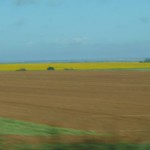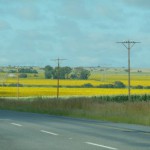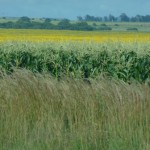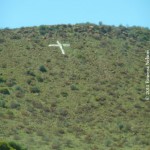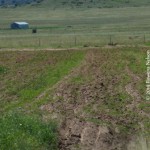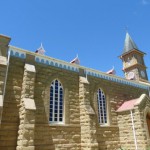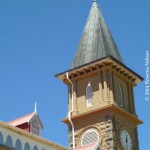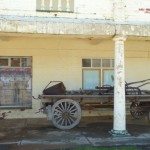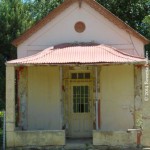I’m suddenly yanked from a delicious, cosy cocoon of sleep by a shrill, repetitive, digital bleating. It’s my alarm valiantly, persistently informing me that it’s 05:00. My mood is not quite as foul as it usually is when I’m woken at that time of the morning, for today my father, mother and I begin our family road trip to the Eastern Cape. Our aim was to leave by 06:00 and get out of Jozi before the masses made their daily pilgrimage into the City of Gold and her surrounding suburbs. And so, just after the appointed hour, I stagger out under an overcast sky, rucksack on my back, insulated coffee mug in one hand and keys in the other, having undertaken a final paranoid (it’s in my genes!) check of the apartment. I clamber into the car and we send up a prayer of gratitude for this time together, and for safety and blessing on our travels. And then we’re on our way.
But why?
It was sometime toward the end of last year that I happened to mention to Dad and Mum that I was considering a visit to the Eastern Cape, not only to see whether I could dig up anything on the elusive Nelsons who came from that part of the country, but also simply to walk in the towns they had walked in, to catch a glimpse of what their lives would have been like back then, to remember and acknowledge the grace that has resulted in me being here today. To my surprise, it was my father who said, “We should go together,” and it was he who, barely days later, asked, “What about February?” Now this surprised me because I hadn’t thought that he held any particular interest in this whole family history thing, but I had just been showing him how I searched for records online when we happened to find his father’s baptism certificate, and I think that may have been when he was bitten by the bug 😉 Since then, almost every time I spoke with him, I was interrogated with “What else have you found?” in one form or another 🙂 At that stage, February was but a few months away, so the suggestion sent me into a mild panic. I saw no way that I would be ready to embark on a well-organised, fruitful research trip with the little I knew about that side of the family. But I realised that it wasn’t all about the research: it was as much about my living relatives as those who’d gone before. Besides, as Tracy Chapman reminded me, “If not now, then when?”1 – a good question for the serial procrastinator!
Vrystaat!
It takes us roughly an hour to reach the Vaal River, and now we’re in the Free State. The early start has given us all a serious appetite and I hand round scrambled egg and bacon rolls which, in our family, is like handing round memories: they’re our staple road trip food, always made by Dad, stuffed full of reminders of good times we’ve shared. The clouds are reluctantly starting to dissipate, and rays of sunshine start peeking through. The landscape is typically Free State: vast open spaces, rolling mielie fields, ploughed farmlands and smiling sunflowers, punctuated every now and then with an obligatory windmill or homestead.
I sip my coffee and read out a Seeds of the Kingdom devotional which I receive daily via e-mail. Fortunately, my motion sickness has improved greatly since my childhood, or perhaps it’s just that we now have aircon.
Driving through Ventersburg, a sign advertising The Fat Butcher leaves us in no doubt as to what he thinks of his biltong! About 40 kilometres further on, a reservoir-dam-type-thingie announces that we’ve just passed “A DAM FINE PADSTAL”. It’s just after 10:00 when we pull into the Shell Ultra City on the outskirts of Bloemfontein. Shortly thereafter, we turn off the N1 onto the N6 and are promptly informed by a road sign that we’re on the “Friendly N6 Route” – we’re very grateful for this, not being particularly keen to find out whether an unfriendly one exists!
Now we’re going to start passing through little “dorpies” dotted along aforementioned friendly route: Reddersburg, Smithfield, Rouxville. I Google each as we approach them and read out snippets from Wikipedia. Each holds a little history, a little fascination, a little architecture all of their own. Each calls out to be explored.
Respite from the rush of the road in Rouxville
The steeple of Rouxville’s Dutch Reformed church succeeds in briefly luring us off the main road. We pull up outside the stunning sandstone structure to which said steeple is attached. Mum and I tumble out the car, cameras in hand, and set about trying to capture some of the beauty of the building, which dates from 1879 and is now a national monument. We round the church, clicking away like paparazzi circling a celebrity, and then peer inside through the open door. We walk into the cool quietness. There is a wooden ceiling and wooden panelling on the walls. Wooden stairs lead up to what seems to be a cry room for mothers and infants. Another shorter flight of stairs leads into the sanctuary, which exudes a sense of calm. It is light and airy, fully carpeted, filled with wooden pews, and gently slopes down toward the rather striking pulpit and organ. We tear ourselves away and return to the car, where Dad is patiently waiting.
Driving another block, we find that we’ve already left the tar road behind and are now on dirt. Old buildings stand like sentries frozen in time, watching over this little town. Oh, the stories they could tell! It is as if they hold a certain sadness within themselves, and perhaps it is so, for Rouxville has endured much, including a two-year desertion when her occupants apparently wound up in a concentration camp2. We turn right and then right again, heading back to the N6, but drive slowly, as if mesmerised by the time warp we appear to have stumbled into…

